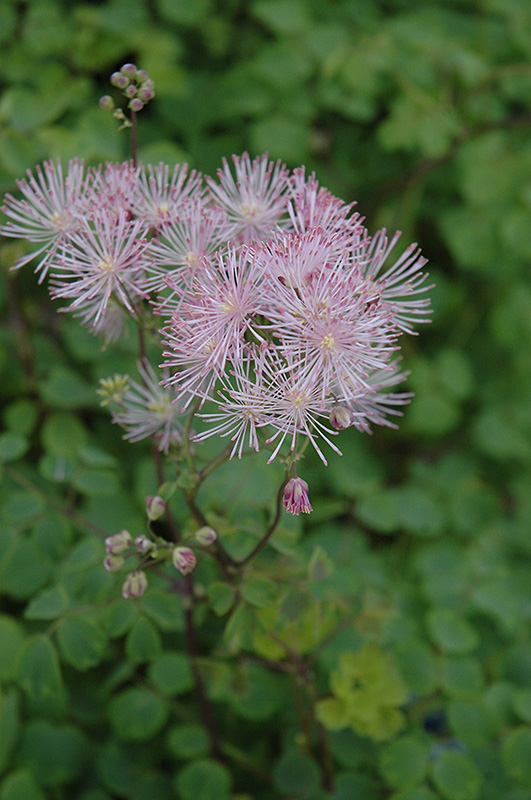Plant Height: 3 feet Flower Height: 4 feet Spacing: 18 inches
Sunlight:
Hardiness Zone: 4 Other Names: T. aquilegifolium Description: A beautiful plant from our native meadows with columns of steely blue foliage arising in spring, turning to a glaucous green; stately stems topped with bright white and violet flowers; lovely massed along borders; will readily naturalize Ornamental Features Meadow Rue features dainty panicles of white star-shaped flowers rising above the foliage in early summer. The flowers are excellent for cutting. Its ferny leaves are bluish-green in color. As an added bonus, the foliage turns a gorgeous olive green in the fall. The olive green stems can be quite attractive. Landscape Attributes Meadow Rue is an herbaceous perennial with an upright spreading habit of growth. It brings an extremely fine and delicate texture to the garden composition and should be used to full effect. This is a relatively low maintenance plant, and should be cut back in late fall in preparation for winter. It is a good choice for attracting bees and butterflies to your yard, but is not particularly attractive to deer who tend to leave it alone in favor of tastier treats. It has no significant negative characteristics. Meadow Rue is recommended for the following landscape applications; Planting & Growing Meadow Rue will grow to be about 3 feet tall at maturity extending to 4 feet tall with the flowers, with a spread of 24 inches. When grown in masses or used as a bedding plant, individual plants should be spaced approximately 18 inches apart. It grows at a medium rate, and under ideal conditions can be expected to live for approximately 10 years. As an herbaceous perennial, this plant will usually die back to the crown each winter, and will regrow from the base each spring. Be careful not to disturb the crown in late winter when it may not be readily seen! This plant does best in partial shade to shade. It does best in average to evenly moist conditions, but will not tolerate standing water. It is particular about its soil conditions, with a strong preference for rich, acidic soils. It is somewhat tolerant of urban pollution. This species is native to parts of North America. It can be propagated by division.![]()
![]()
![]()
![]()
![]()
![]()
![]()
![]()
![]()
![]()
![]()
![]()
![]()
![]()
![]()
Characteristics
Applications
Ornamental Features
This guide is an online resource representing many of the varieties that we carry over the course of the season, and is intended for informational purposes only. Inventory varies seasonally, so we cannot guarantee that every plant will be in stock at all times - please contact the store directly for current availability. It does not include our entire selection of plants, so be sure to visit our store to see varieties that may not be represented on this list.


